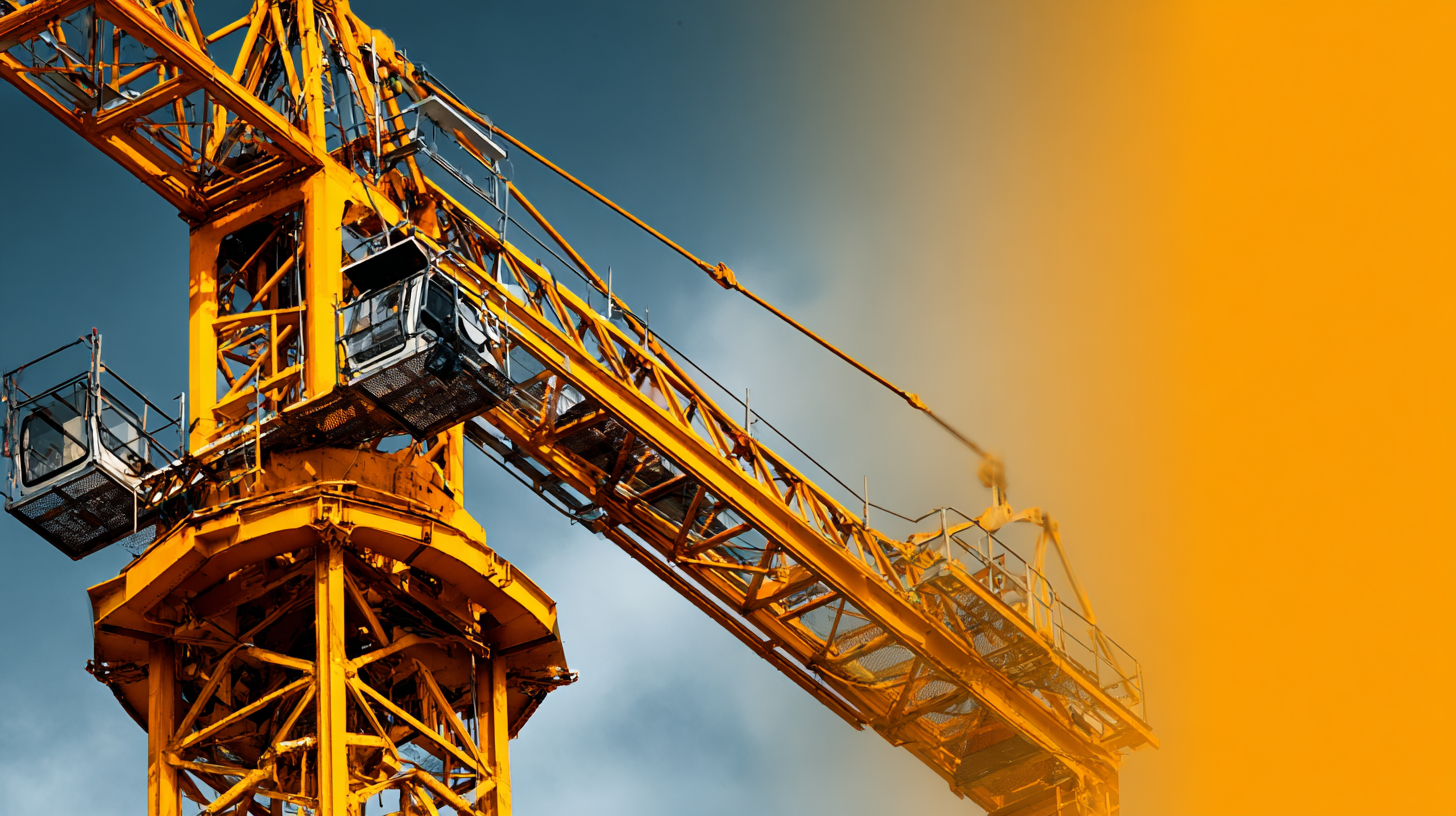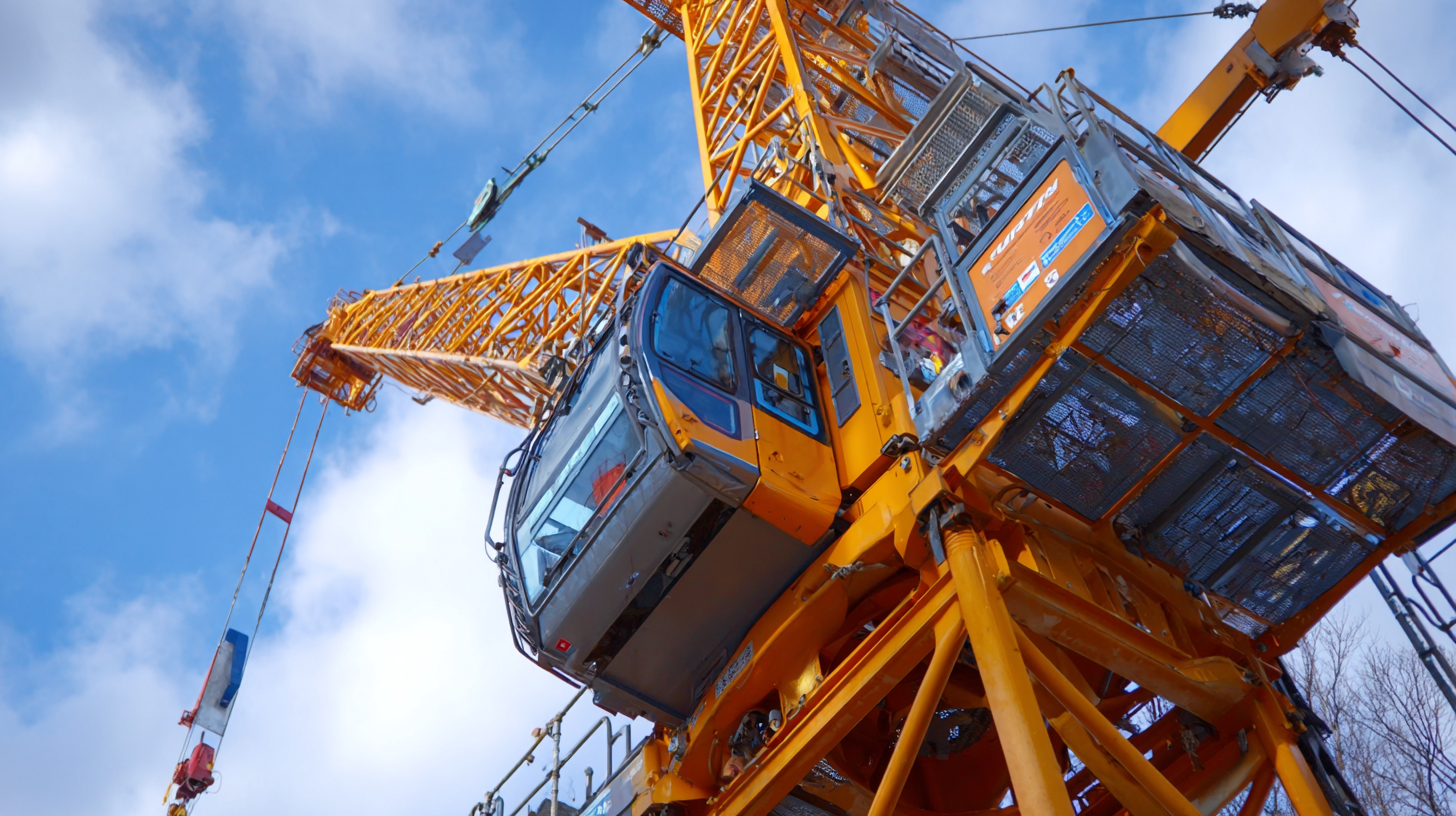In the construction industry, selecting the appropriate parts of tower cranes is crucial for optimizing project efficiency and safety. According to a report by Research and Markets, the global tower crane market is projected to reach USD 8.9 billion by 2025, driven by the increasing demand for high-rise construction and infrastructure development.
 Understanding the intricacies of tower crane components, such as booms, jibs, and hoists, is essential for construction managers and engineers aiming to enhance their project outcomes.
The choice of parts of tower crane directly impacts load capacity, operational safety, and overall project timelines, making it imperative for stakeholders to be well-informed about the best available options.
This ultimate guide will provide valuable insights into selecting the best parts for your tower crane–a decision that could significantly influence the success of your projects.
Understanding the intricacies of tower crane components, such as booms, jibs, and hoists, is essential for construction managers and engineers aiming to enhance their project outcomes.
The choice of parts of tower crane directly impacts load capacity, operational safety, and overall project timelines, making it imperative for stakeholders to be well-informed about the best available options.
This ultimate guide will provide valuable insights into selecting the best parts for your tower crane–a decision that could significantly influence the success of your projects.
When selecting tower cranes for construction projects, understanding the key components and their functions is paramount. Tower cranes typically consist of five primary parts: the base, tower, jib, counter jib, and the operator's cabin. Each of these elements plays a crucial role in the crane's overall functionality. According to the "Global Tower Crane Market Report 2022," the base provides stability, while the tower height significantly influences lifting capacity and range. A higher tower allows for greater reach and can accommodate larger projects, which is essential as the global construction market is projected to grow by over 5% annually through 2028.
The jib, or horizontal arm, is responsible for carrying loads and can often be adjusted to different lengths, enhancing the crane’s versatility. Reports indicate that jib configurations can dramatically affect productivity; for instance, cranes with longer jibs optimally reduce the number of cranes needed on a site, which can save significant costs. Meanwhile, the counter jib offers balance and stability to prevent tipping, a critical aspect in high-load operations where safety is paramount. Understanding these fundamental components not only informs selection but also maximizes the crane’s operational efficiency within any given project.
| Component | Function | Material Used | Weight (kg) | Maintenance Frequency |
|---|---|---|---|---|
| Mast | Provides vertical support | Steel | 1200 | Annual |
| Jib | Arm for lifting loads horizontally | Steel | 800 | Monthly |
| Counterweights | Balances the crane during operation | Concrete | 2500 | Quarterly |
| Slew Ring | Allows the upper part to rotate | Steel | 400 | Semi-Annual |
| Hoist | Lifts and lowers the load | Steel and Aluminum | 300 | Monthly |
When selecting a tower crane for your project, evaluating load capacity is crucial. According to the International Cranes and Specialized Transport (ICST) report, cranes' lifting capacities can vary dramatically, ranging from 4 tons for smaller models to over 20 tons for heavy-duty units. Understanding your project's specific requirements allows you to choose a crane that can handle the maximum load without compromising safety or efficiency.
Additionally, consider the load chart provided by crane manufacturers, which details the lifting capacity at various boom lengths and configurations. For instance, the Tower Crane Manufacturers Association reports that a standard luffing jib tower crane can sustain higher loads at shorter boom lengths, making them ideal for urban construction sites with limited space. Analyzing these charts helps not only in selecting the right crane but also in optimizing the operational aspects, reducing downtime, and enhancing overall project productivity.

When selecting the best parts for tower cranes, adhering to safety standards is paramount. The tower crane manufacturing industry is governed by stringent regulations that ensure the safety of operators and workers on construction sites. According to the Occupational Safety and Health Administration (OSHA), crane-related accidents account for approximately 22% of fatalities in the construction sector. This statistic underscores the critical need for compliance with safety standards during the manufacturing and selection of crane components.
Moreover, the European Committee for Standardization (CEN) has established specific guidelines for the design and performance of tower cranes, such as EN 14439, which outlines safety requirements and testing protocols. Compliance with these standards ensures that tower cranes can withstand various loads and environmental conditions. In fact, a report from the International Organization for Standardization (ISO) indicates that adherence to such standards can reduce operational failures by up to 30%.
Prioritizing safety standards not only protects workers but also enhances the operational efficiency of tower cranes, making the selection of high-quality, compliant parts essential for any construction project.
The global tower crane market is on a robust trajectory, with growth projected from $36.36 billion in 2021 to $49.64 billion by 2028, reflecting a compound annual growth rate (CAGR) of 4.5%. In the wake of the COVID-19 pandemic, the construction sector is rebounding quickly, driving an increased demand for tower cranes. As the market evolves, significant opportunities are emerging, especially in the Chinese tower crane rental sector, which is characterized by vast potential but also numerous challenges. Industry experts highlight that addressing these obstacles is crucial for unlocking market growth.
Tip 1: When selecting tower cranes for your projects, consider their application in various sectors like construction, mining, and industrial use to ensure you choose equipment that meets specific operational needs.

The truck-mounted crane market is also thriving, with a growth rate of 5.5%, fueled by infrastructure development initiatives. As the world moves towards rebuilding and expanding urban landscapes, the demand for versatile and efficient cranes increases.
Tip 2: Invest in training for your operators to maximize the efficiency and safety of crane operations, as skilled personnel can significantly impact project timelines and costs.
The evolution of tower crane technology has been pivotal in enhancing efficiency and performance on construction sites. Recent innovations, such as telematics and smart controls, have significantly improved operational productivity. According to a report by ResearchAndMarkets, the global telematics market in construction is projected to grow from $2.45 billion in 2021 to $5.37 billion by 2026, demonstrating the increasing reliance on technology for efficient management. These advancements not only optimize crane operations but also reduce maintenance costs by allowing real-time monitoring and predictive analytics.
**Tip:** When selecting tower crane parts, consider models that integrate advanced telematics systems to maximize your project's efficiency and minimize downtime.
Additionally, the integration of lightweight materials and advanced crane designs can enhance the load capacity without compromising stability. A recent study by the International Journal of Advanced Structural Engineering indicates that cranes with optimized designs can achieve up to 20% higher lifting capacities while using less energy. Such innovations lead to sustainable practices in construction, allowing projects to meet green building standards.
**Tip:** Always assess the material quality and design specifications of tower cranes to ensure they align with modern efficiency benchmarks.
This chart displays the increasing efficiency of tower cranes over the years from 2000 to 2023, showing advancements in technology that enhance their performance. As innovations in tower crane technology evolve, efficiency has significantly improved, reaching 95% in 2023.
